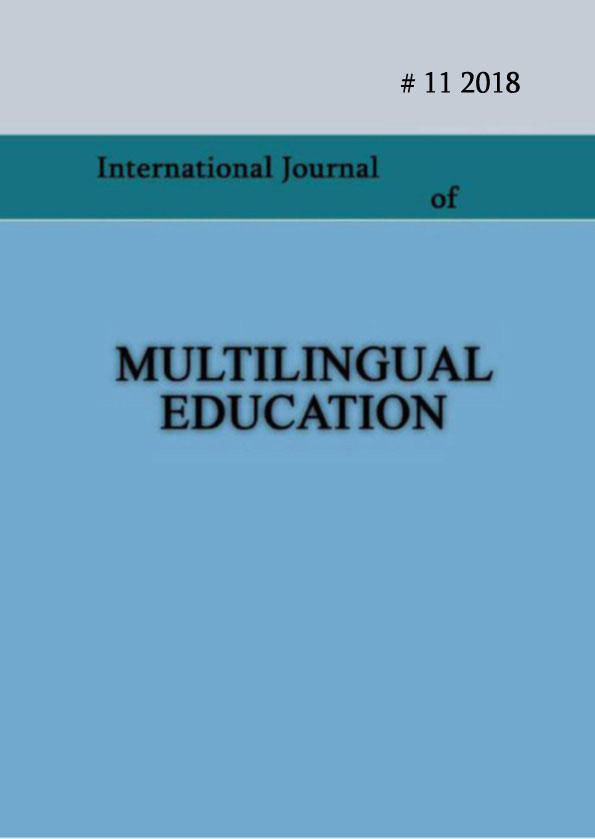The Language Situation, Sociolinguistic Profile Formulae and Bi- and Trilingual Ballot Papers
Keywords:
bilingualism, language situation, Georgia.Abstract
In order to describe a language situation it is necessary to choose an adequate model which is a very complicated task owing to the fact that every language situation is unique in itself. During the 1960s, there were efforts made to discover general patterns for multilingual communities. Those efforts led to the identification of national sociolinguistic typologies and profile formulae. Their advantage is that they have been designed based on objective criteria and that they allow designations for newly discovered circumstances. I thus picked the sociolinguistic profile formula and applied it to the language situation in Georgia’s province of Kvemo (Lower) Kartli. The choice appeared to be successful in two ways: 1) the sociolinguistic profile formula appeared to be an adequate model for the language situation in this case; 2) a new function (viz., use as a language of ballot papers) was identified, so far not dealt with in the sociolinguistic literature. Hence, a new designation was added to the formula.
References
CESKO - http://cesko.ge/geo/list/show/111810-etnikuri-umtsiresobebit-kompaqturad-dasakhlebuli-saarchevno - ubnebi (accessed: February 28, 2018).
Cooper, R. (1989). Language Planning and Social Change. New York: Cambridge University Press.
Ferguson, C. A. (1962). The language factor in national development. In Rice, F. (ed.). Study of the Role of Second Languages in Asia, Africa and Latin America. Washington, DC: Center for Applied Linguistics, 8- 14.
Ferguson, C. A. (1966). National Sociolinguistic Profile Formulas. In Bright, W. (ed.). Sociolinguistics, Proceedings of the UCLA Sociolinguistics Conference. The Hague: Mouton, 309-324.
Haarman, H. (1986). Language in Ethnicity: A View of Basic Ecological Relations, Berlin: de Gruyter.
Haugen, E. (1972). Language and immigration. In Dil, A. S. (ed.). The Ecology of Language: Essays by Einar Haugen. Stanford: Stanford University Press, 1-36.
Kikvidze, Z. (2014). The sociolinguistic profile of Kvemo Kartli, Georgia: Dimensions and formulas. Paper presented at the International Workshop Visible and invisible borders: Language use expressing group belonging and change in the Georgian Greek community (September 1-3, 2014; Frankfurt/Oder, Germany -- Słubice, Poland).
Stewart, W. (1962). An outline of linguistic typology for describing multilingualism. In Rice F. (ed.). Study of the Role of Second Languages in Asia, Africa and Latin America. Washington, DC: Center for Applied Linguistics, 15-25.
Stewart, W. (1968). A sociolinguistic typology for describing national bilingualism. In Fishman, J. (ed.). Readings in the Sociology of Language. The Hague: Mouton, 531-545.
Downloads
Published
How to Cite
Issue
Section
License
Copyright (c) 2018 Zaal Kikvidze

This work is licensed under a Creative Commons Attribution-NonCommercial 4.0 International License.
Copyright (c) - Authors who publish with this journal agree to the following terms: Authors retain copyright and grant the journal the right of first publication with the work simultaneously licensed under a Creative Commons Attribution-Noncommercial 4.0 International License, which allows others to share the work with an acknowledgement of the work's authorship and initial publication in this journal. Authors are permitted and encouraged to post their work online (e.g., in institutional repositories or on their personal website) prior to and during the submission process, as it can lead to productive exchanges, as well as earlier and greater citation of published work (see The Effect of Open Access). Authors may enter into separate, additional contractual arrangements for the non-exclusive distribution of the journal's published version of the work (e.g., post it to a repository or publish it in a book), with an acknowledgement of its initial publication in this journal.

